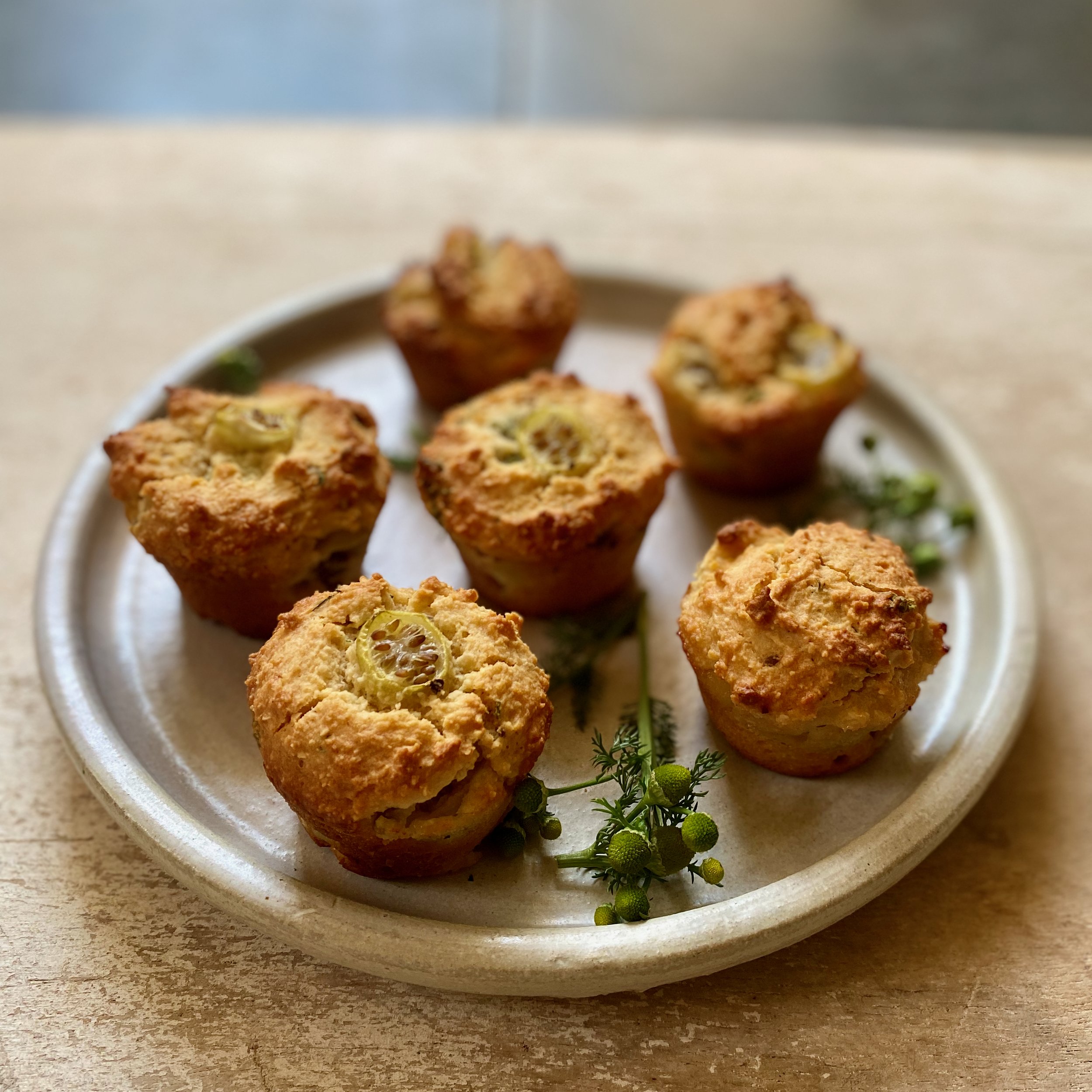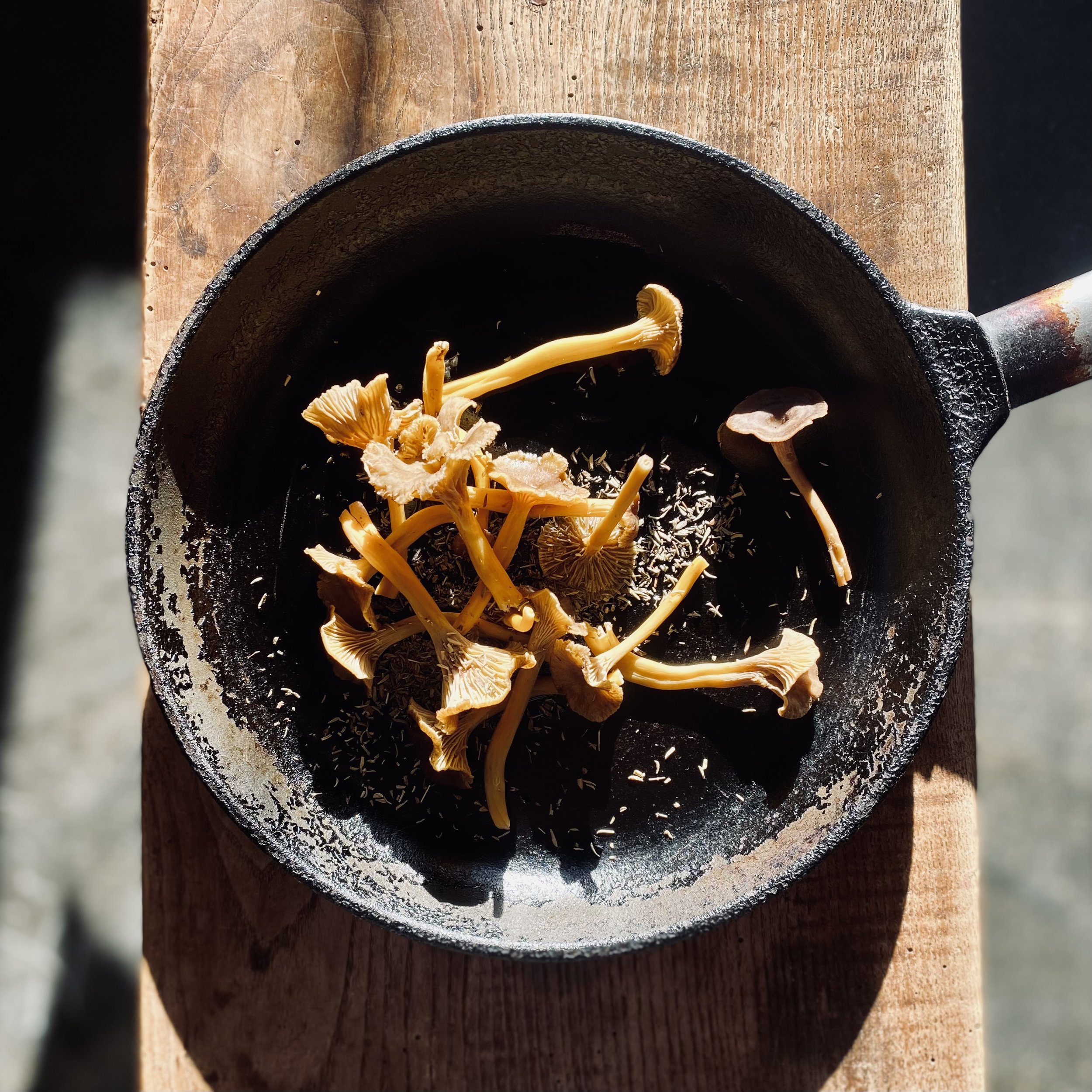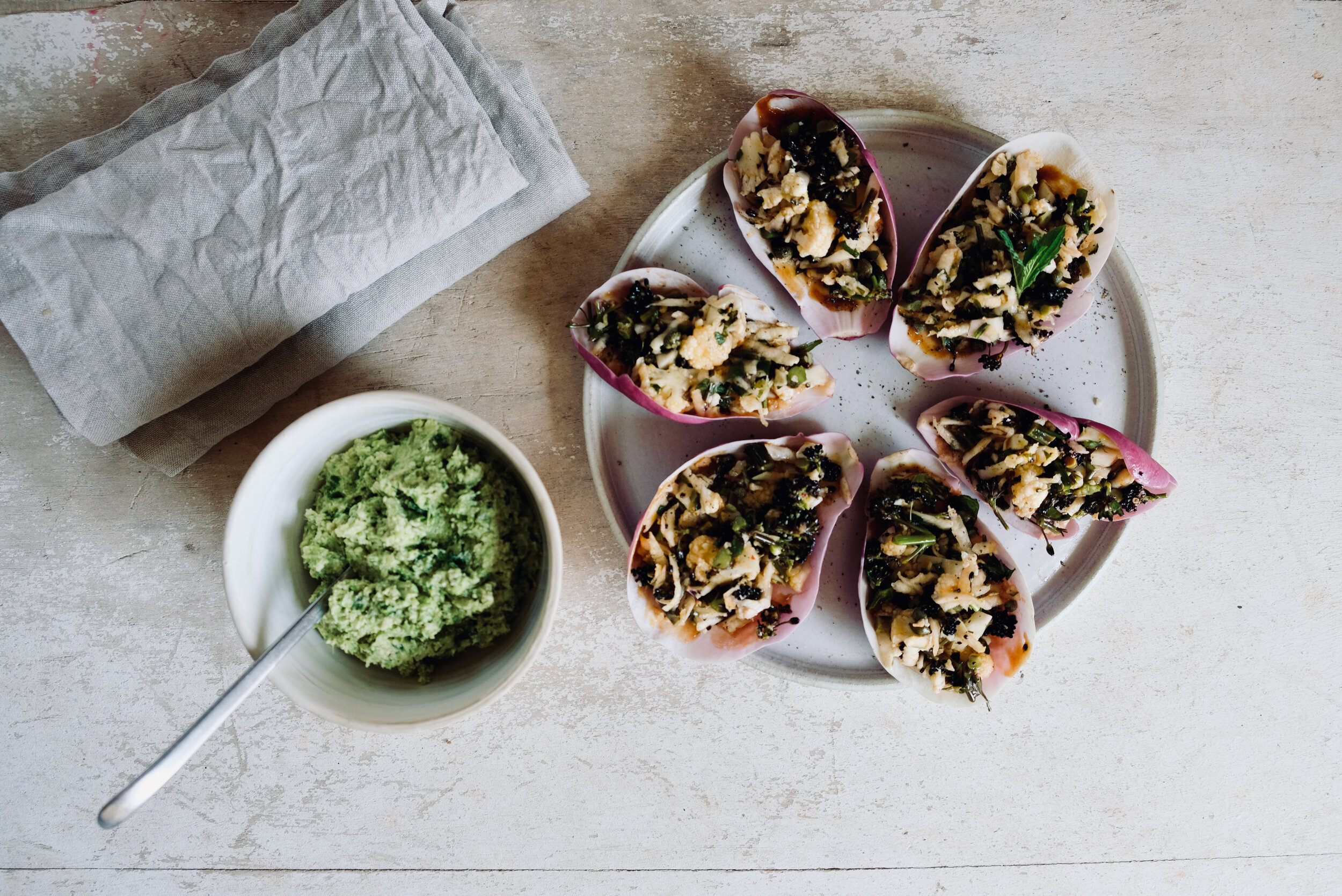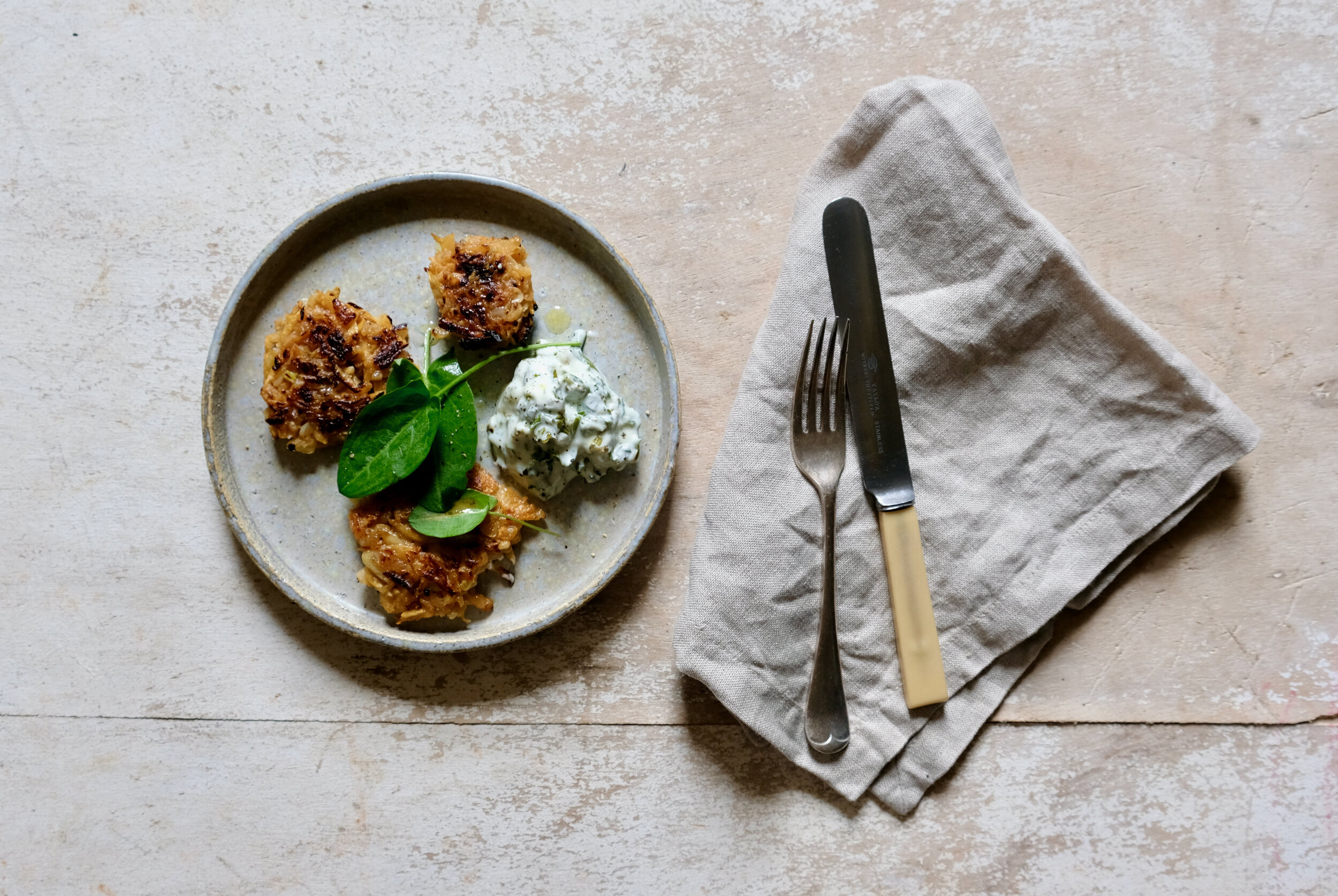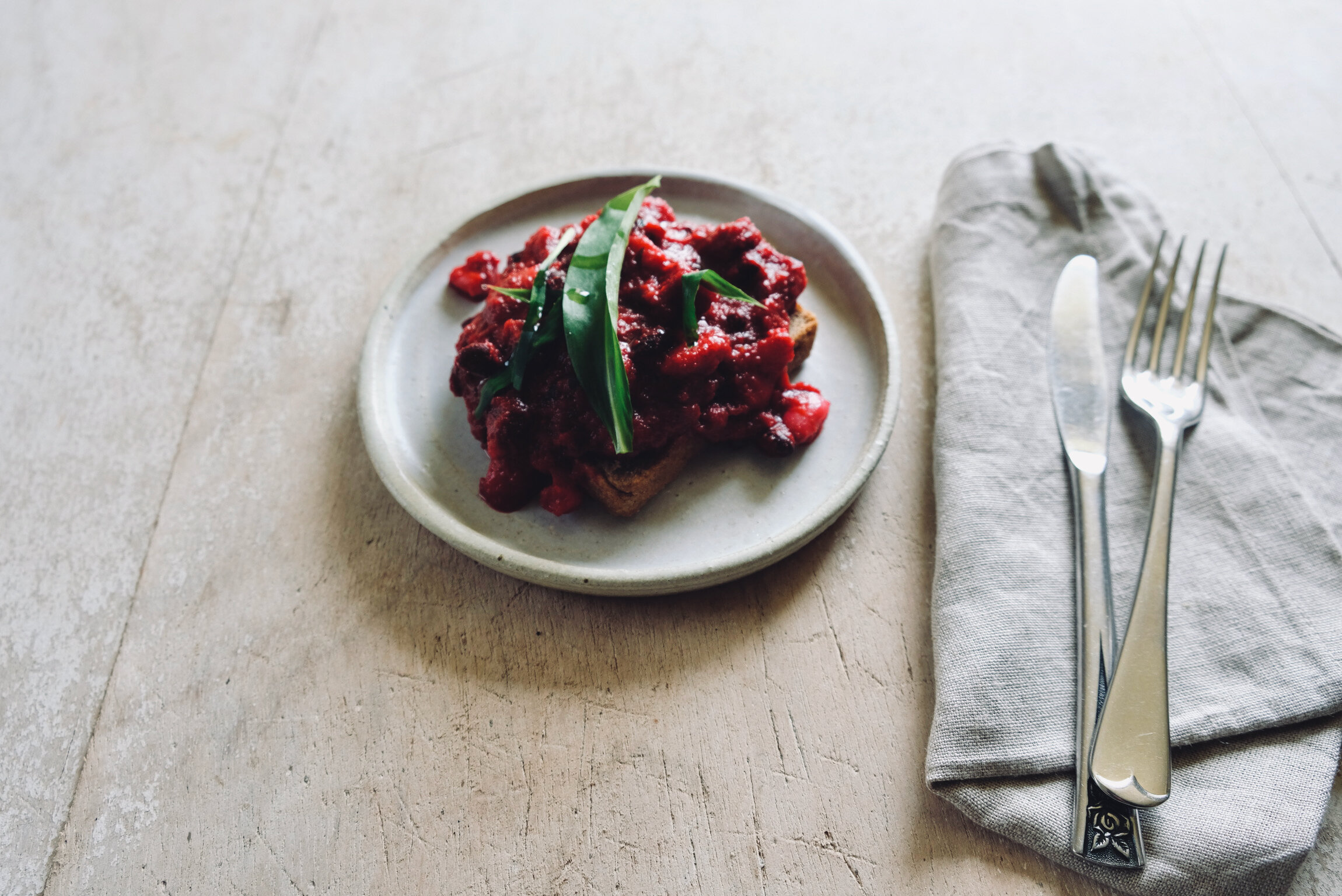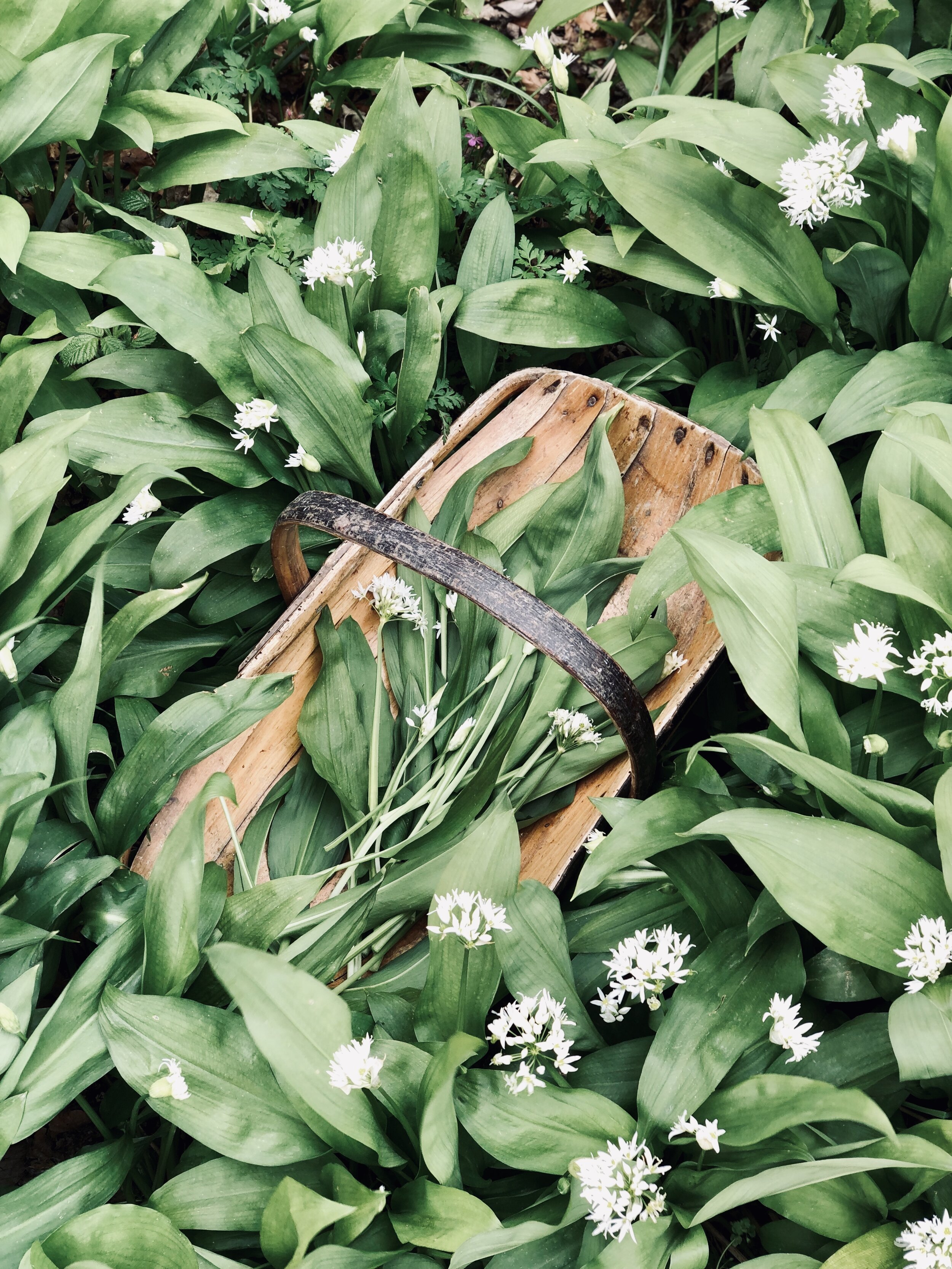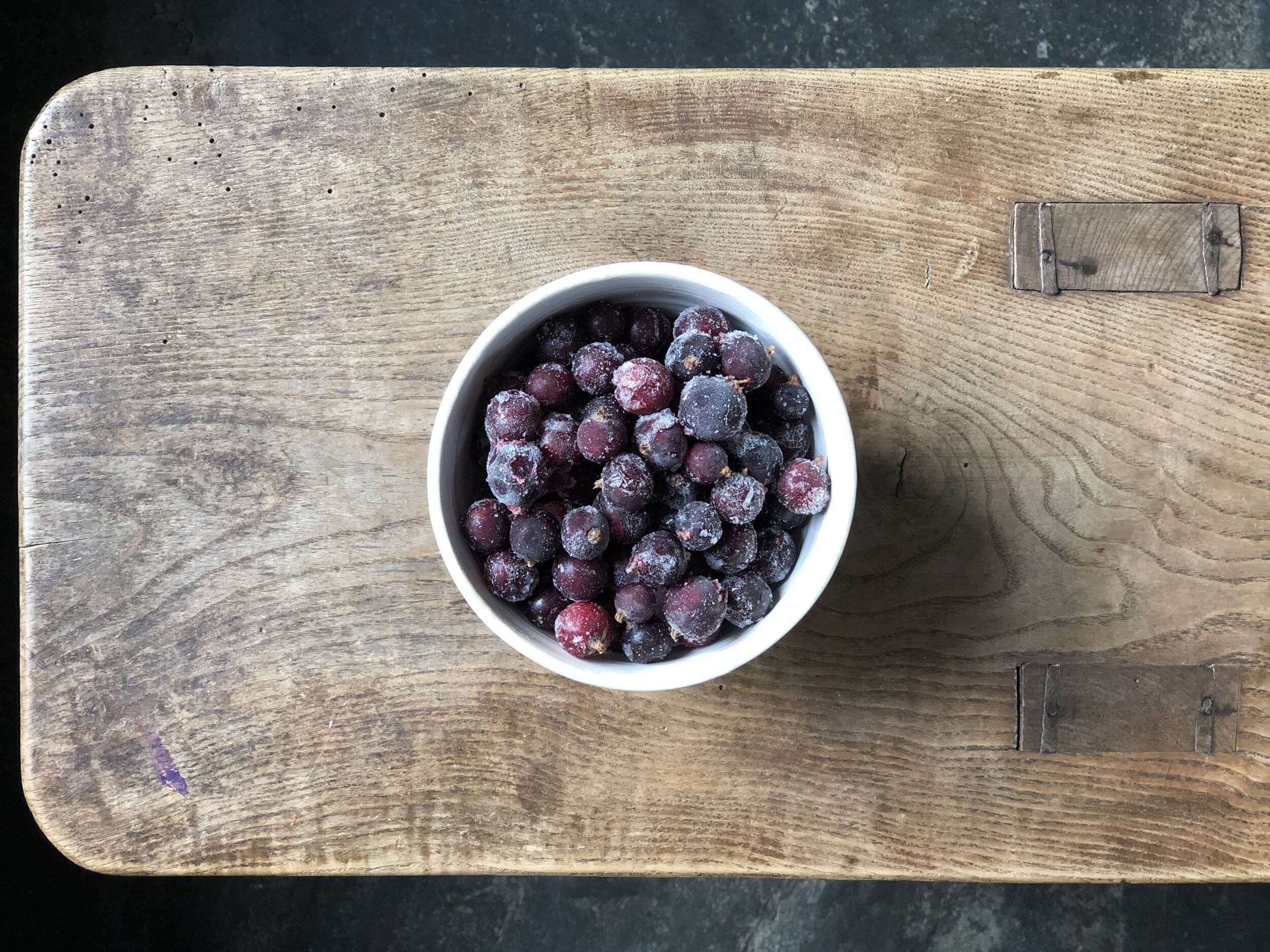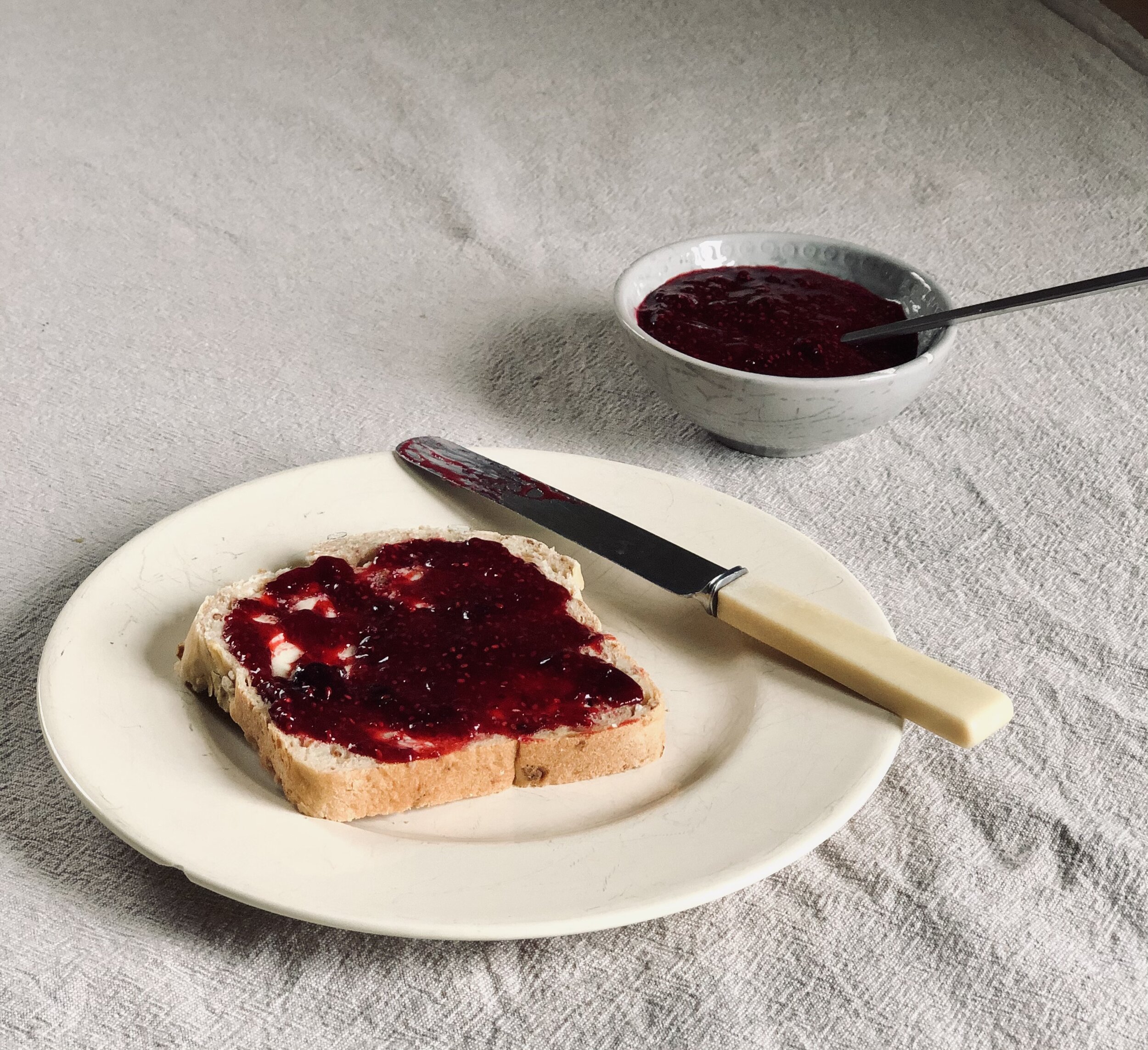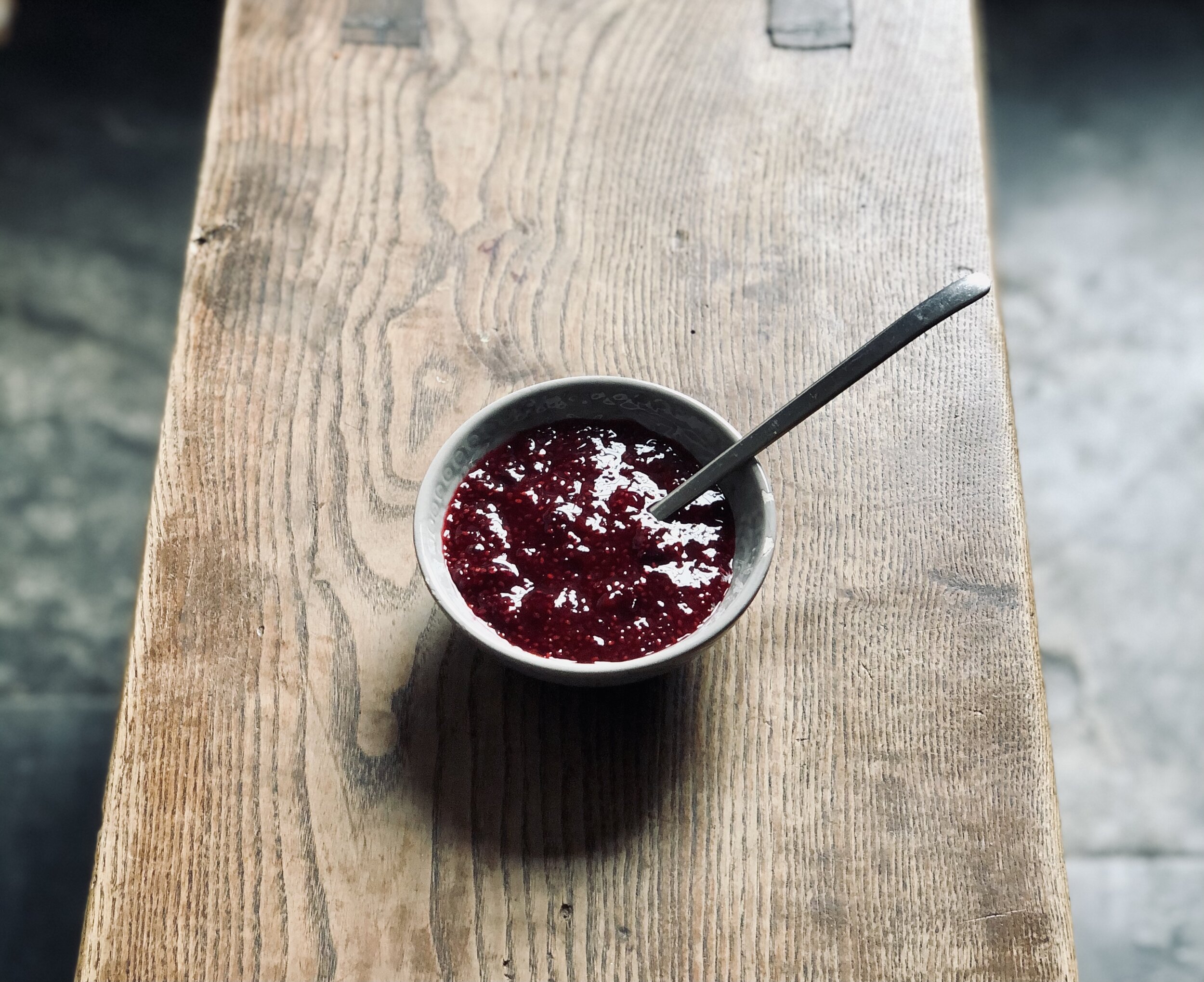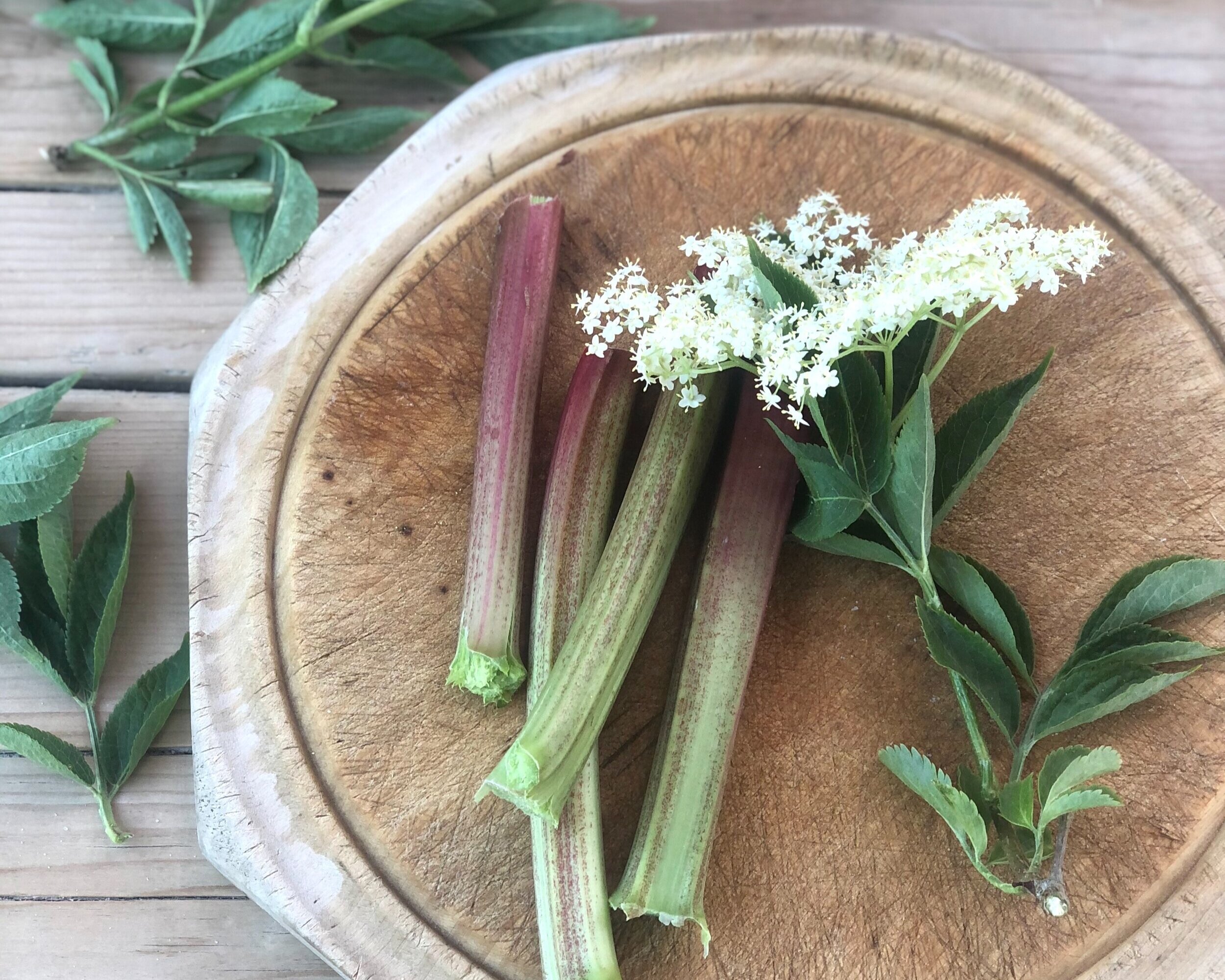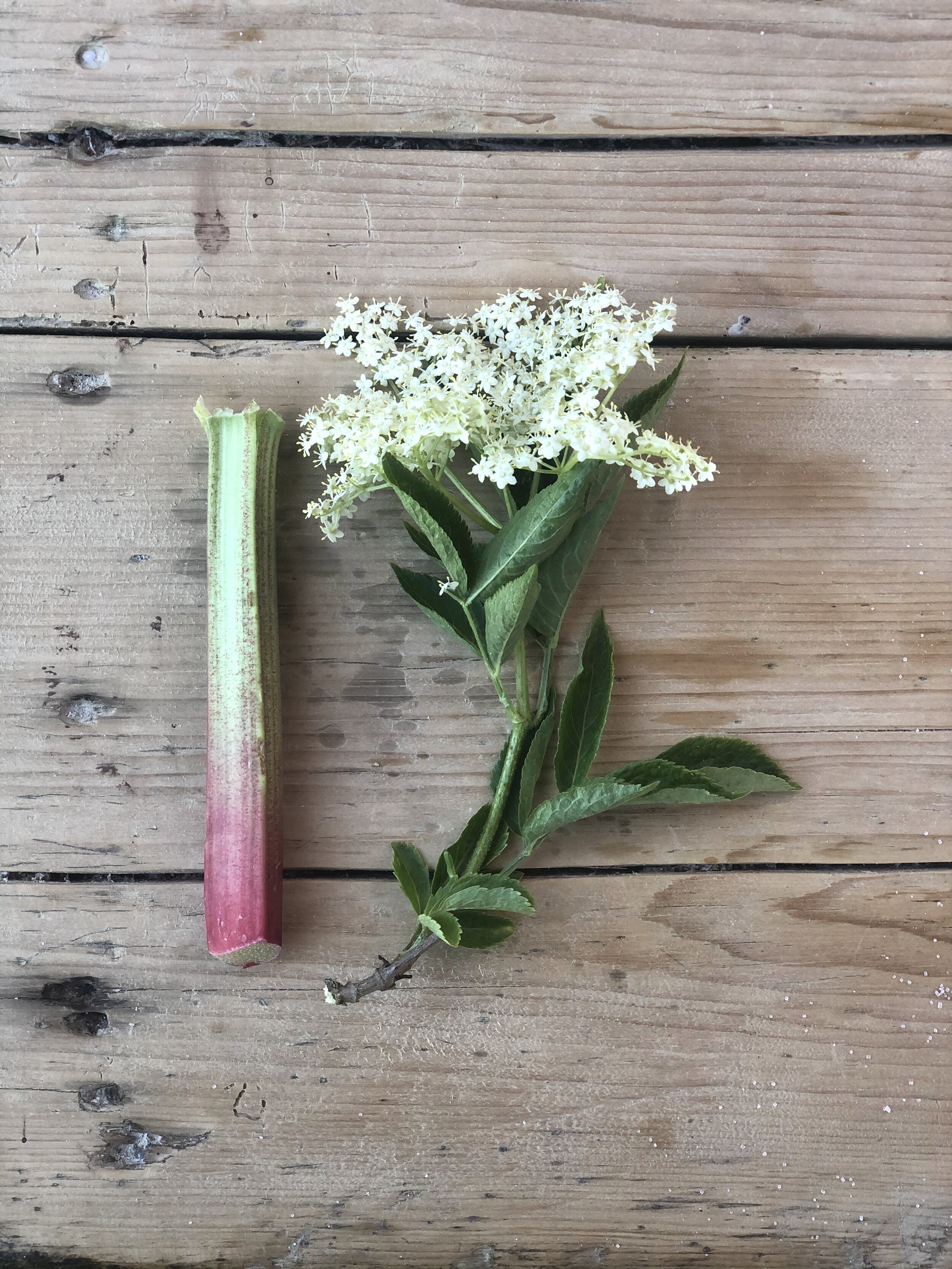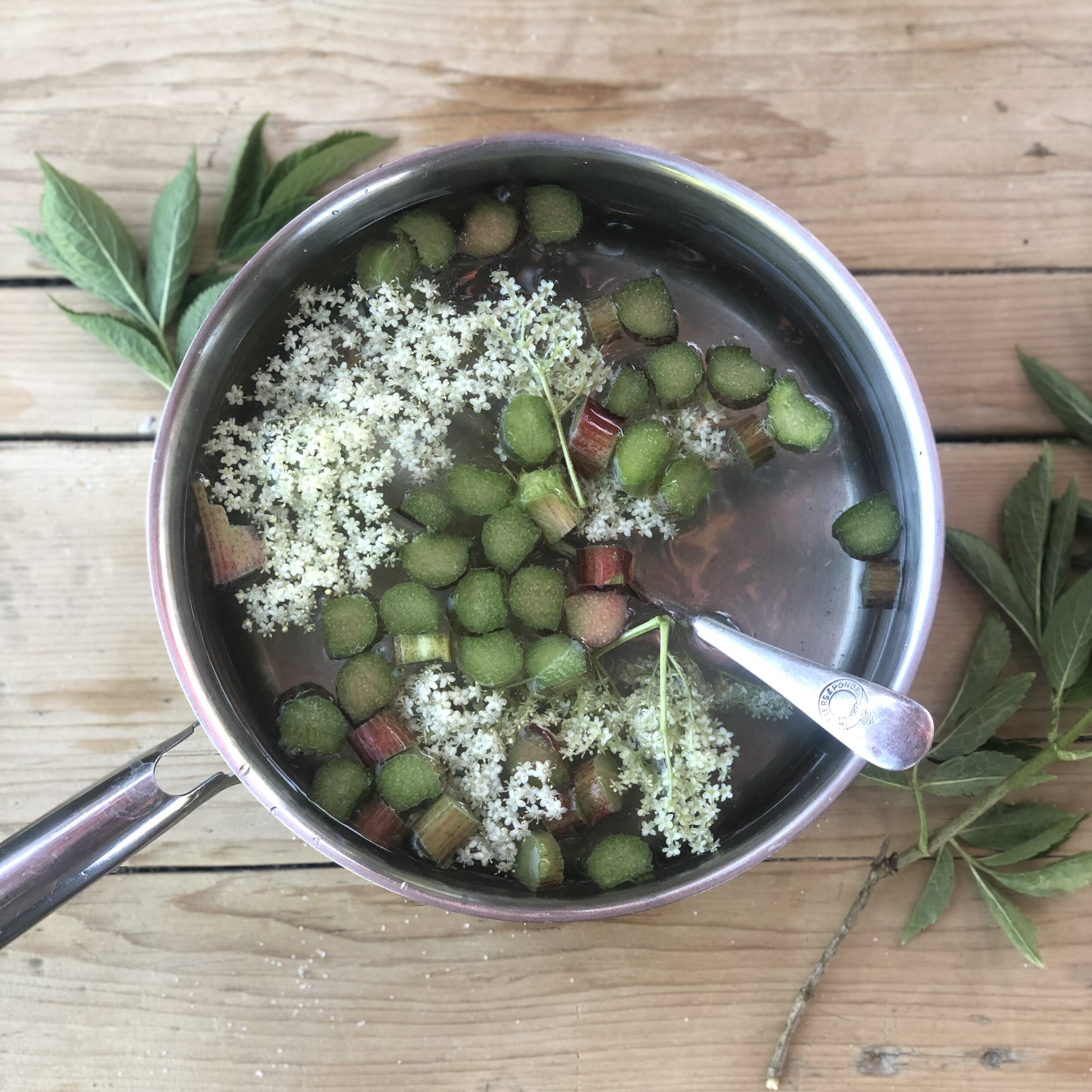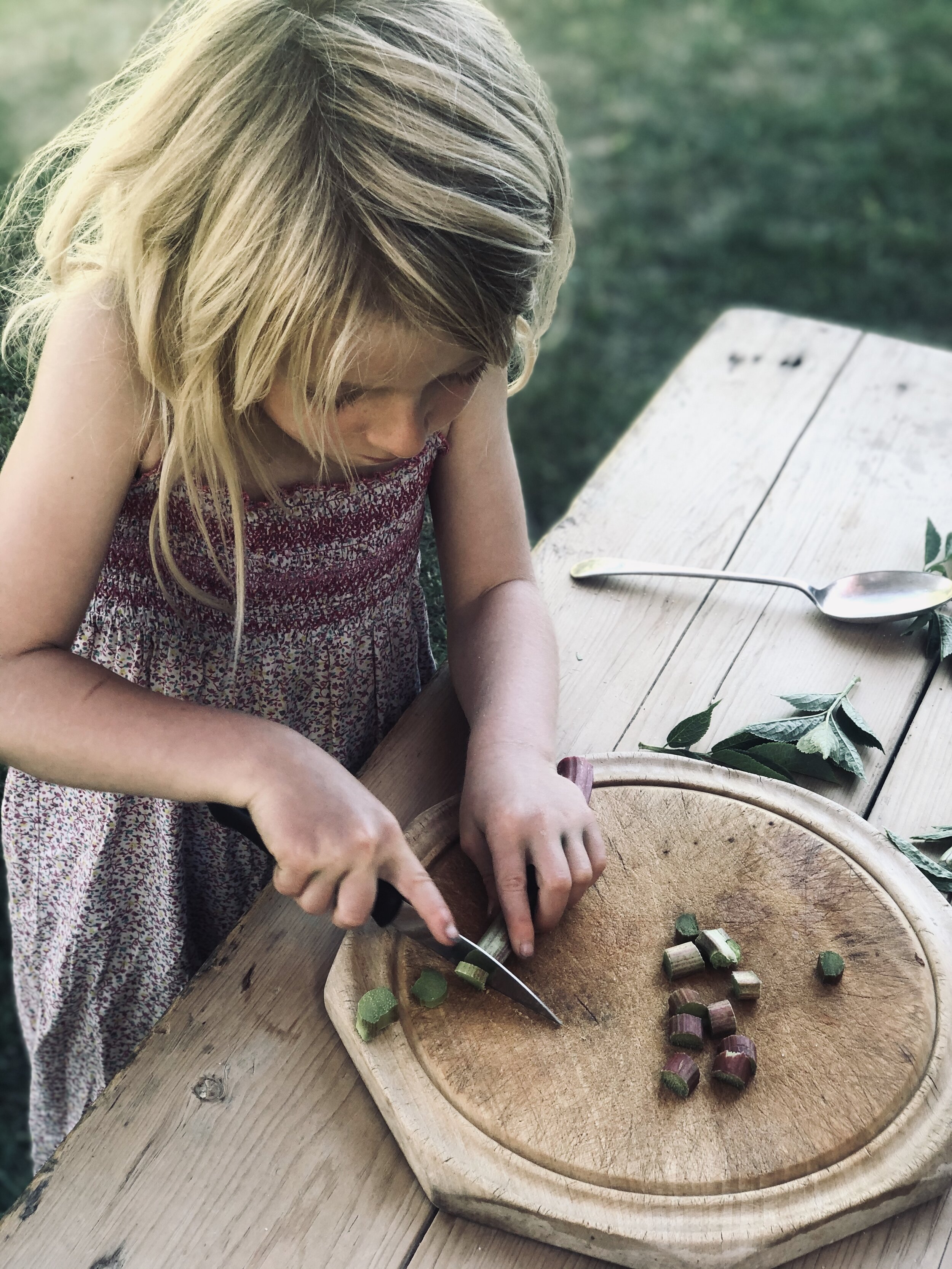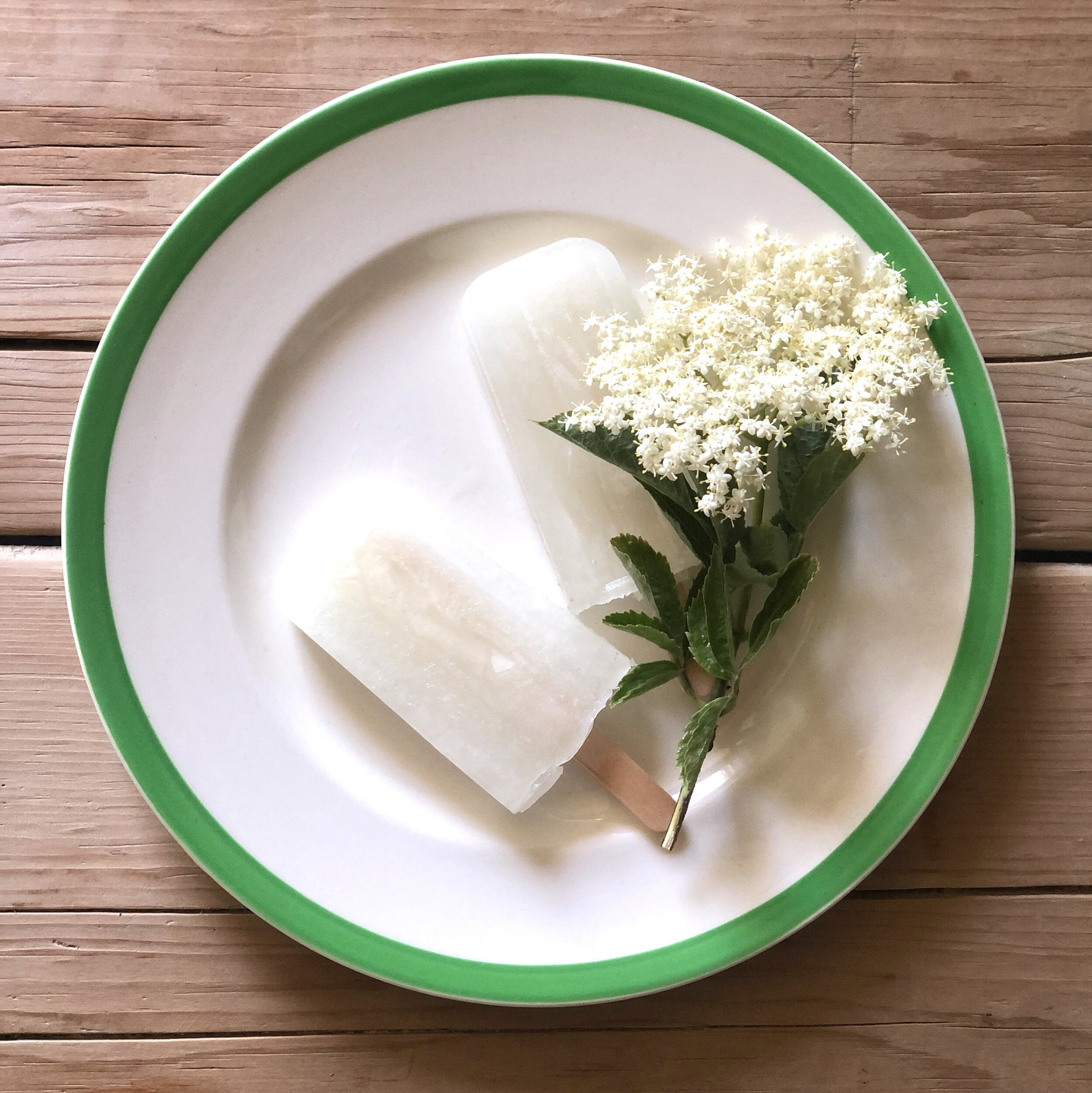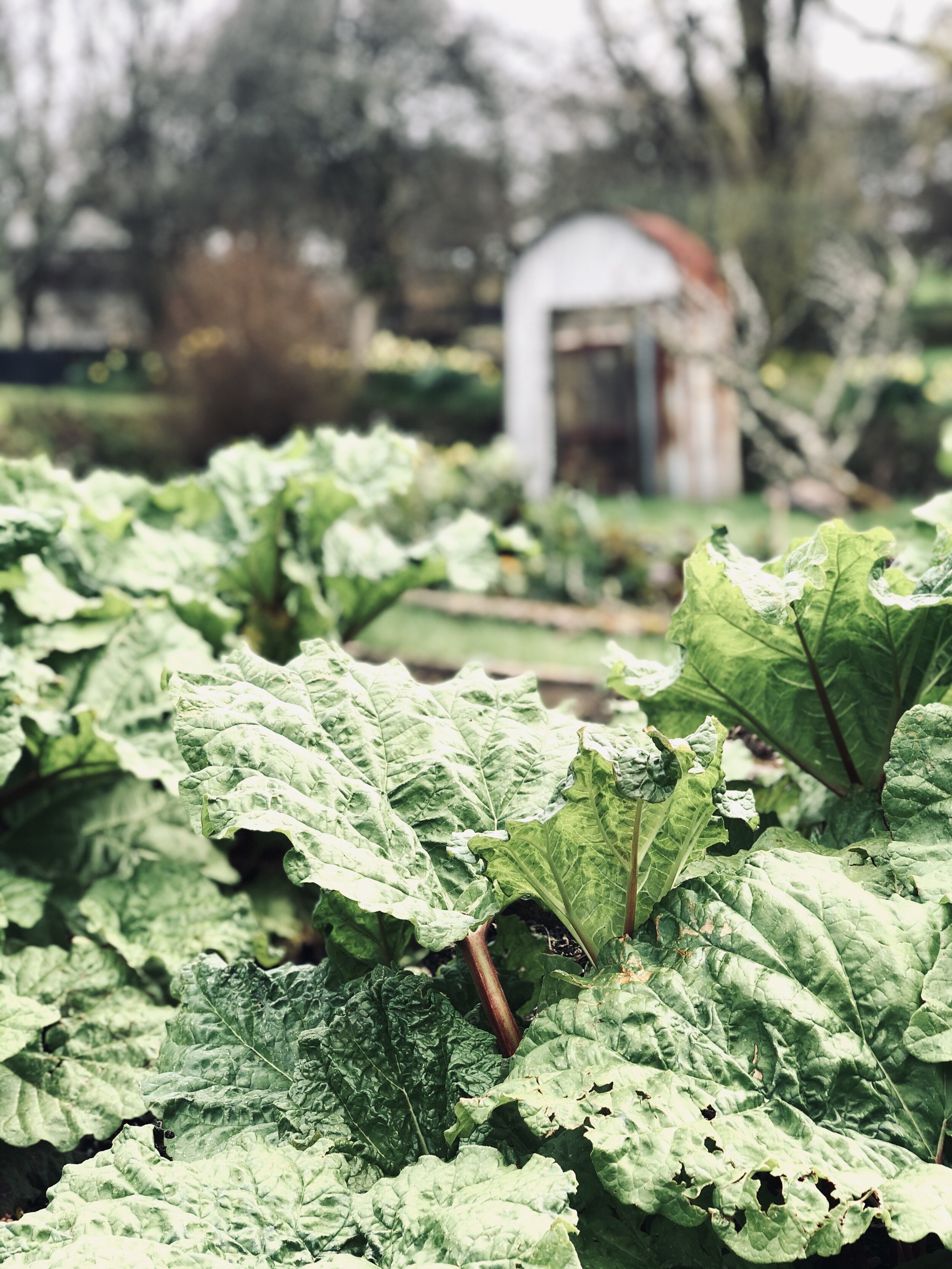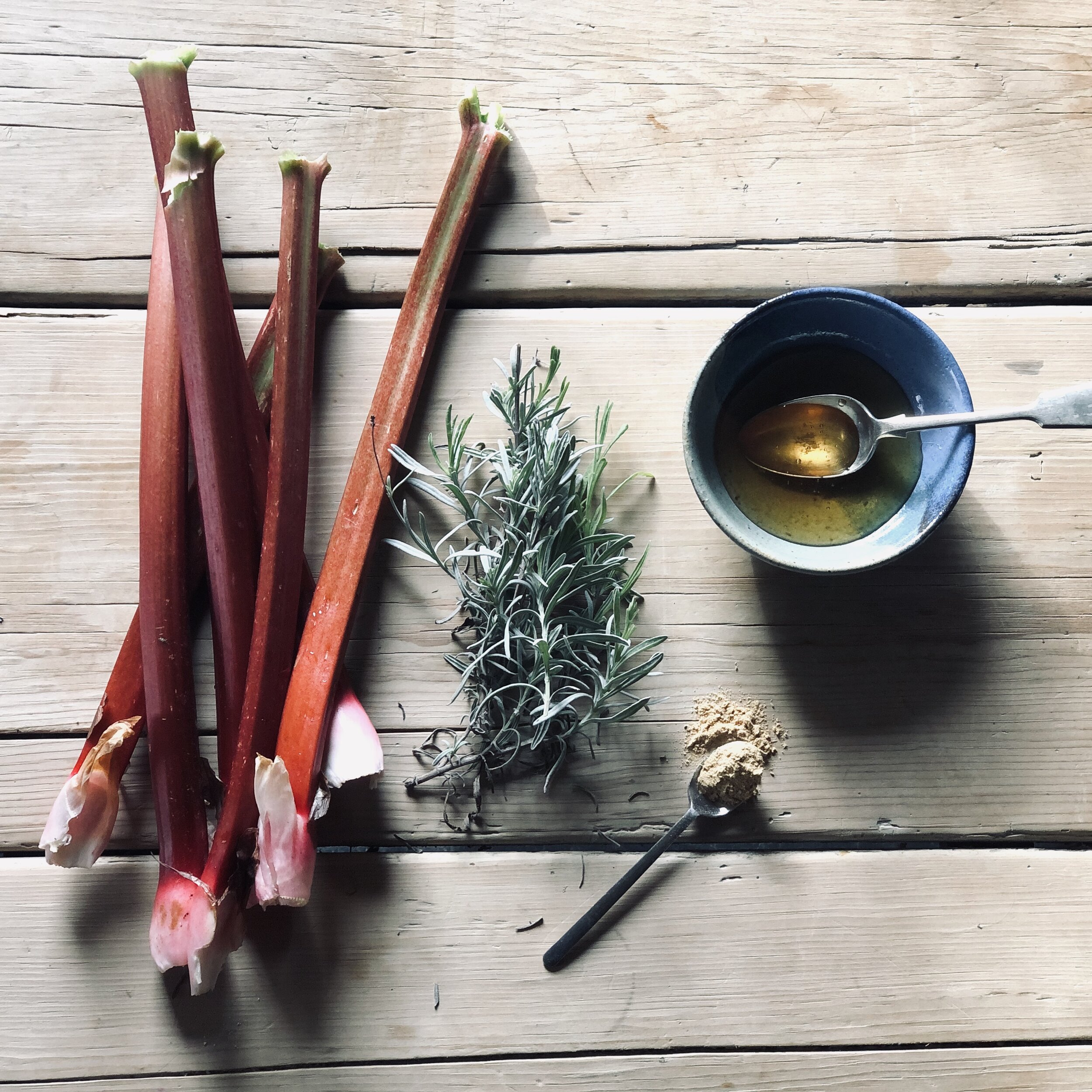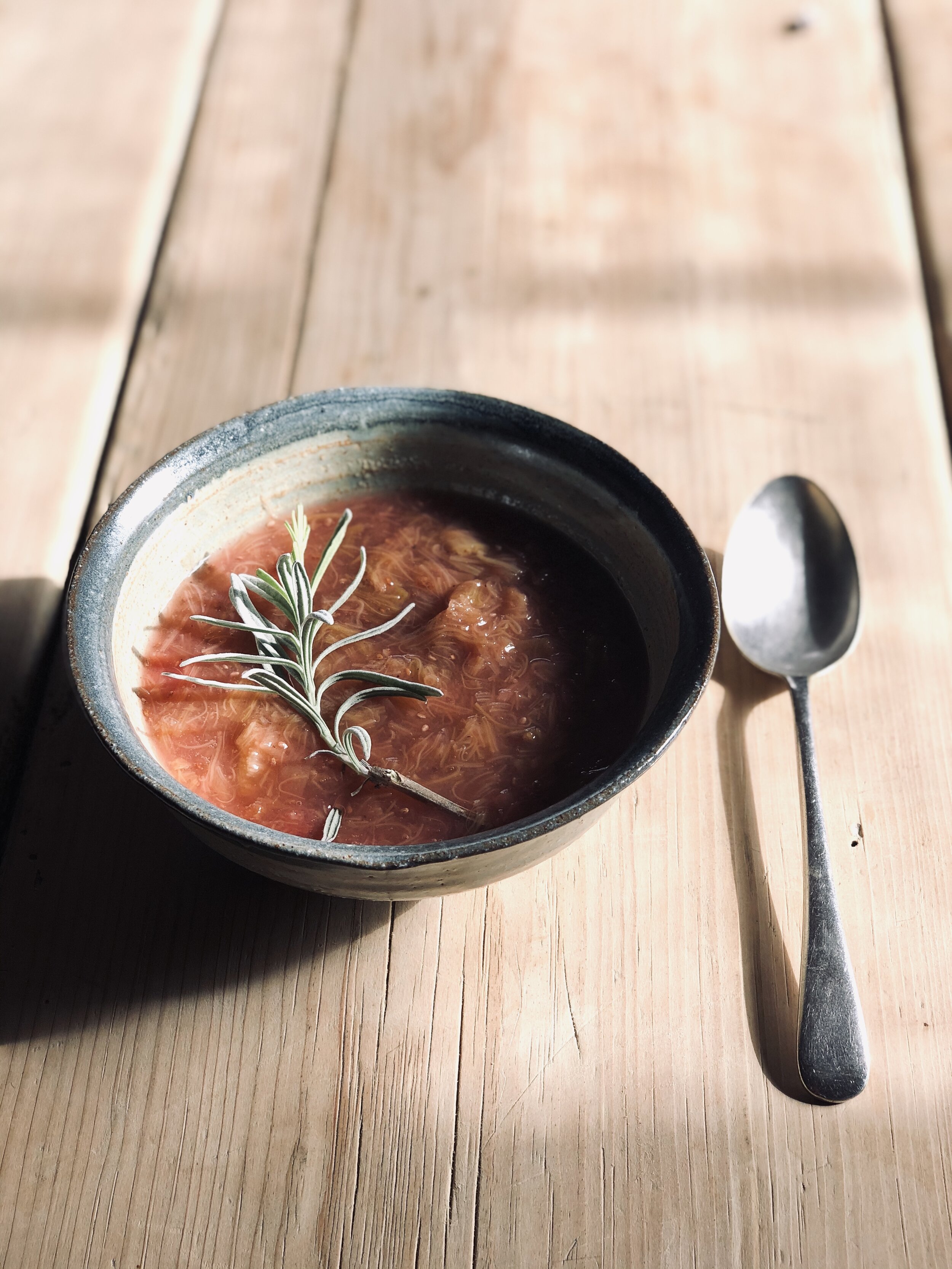I’m a bit in love with these tartlets as a delicious, wholesome snack at any time of day. Made with seasonal ingredients that are easily adaptable, there’s no added sugar with the chia seeds working to thicken the berry sauce before it’s added to the cases.
You can swap in different types of berries - fresh or frozen - according to the time of year and what you have that needs using up, and similarly the nuts that form the base of the cases; I used hazelnuts but these could be substituted for others, so do feel free to play around with the recipe.
I shared these tartlets with Julia Bird and John Hersey whilst recording on location for Episode 17 of my podcast, Breakfast & Beyond, in which we discussed the art of Julia’s beautiful seaweed pressing art that is inspired by the Cornish coastline. They tasted amazing accompanied with coffee by local roasters Lars & Margo, I definitely recommend giving this recipe a try - all the better if you can take them to the beach for an al fresco breakfast!
Listen to Episode 17 of Breakfast & Beyond and share the visual story through John’s stunning photos, via the Episode 17 web page.
Recipe: Blackberry & Elderberry Tartlets
Makes 12
Prep time: 20 minutes (plus waiting for one hour for dates to soften). Cooking time: 25 minutes.
Ingredients:
80g pitted dates
120g hazelnuts
120g ground almonds
1 tbsp coconut oil
Flour, for rolling out (use gluten free if required)
1 tbsp sunflower oil, plus more for greasing
120ml maple syrup
300g berries, fresh or frozen - I used a combination of 3/4 blackberries and 1/4 elderberries
2 tbsp chia seeds
1 tsp vanilla extract
Method:
An hour in advance - roughly cut the dates into small pieces then place the dates in a bowl and add just enough water to cover them. Leave to soften for approx one hour.
Heat oven to 180°C.
Place nuts on a baking tray and cook in the oven for 5 - 10 mins, until turning darker in colour - ensure they do not burn. When ready, remove from oven and set aside to cool.
Sieve dates ovr a bowl to collect and reserve the date juice.
Warm coconut oil in a saucepan over a low heat, then set aside.
Place the cooled nuts in a food processor, blitz for around 30 seconds so they are well broken down. Add the ground almonds and blitz again. Use a spoon to work the mixture out of the sides of the food processor if it starts to compact before blitzing again until well combined.
Add the coconut oil and drained dates to the food processor. Blitz again. Check the consistency of the ‘dough’ - it should be sticky and pliable so that you can roll it out. You may wish to add a splash of date juice, if it feels too firm and crumbly. If adding date juice, just add a little at a time, blitz and re-check consistency.
Remove ‘dough’ from food processor and place on a lightly floured surface. Roll out carefully to a thickness of approx. 5mm.
Grease a 12 hole shallow muffin tin. Select a cookie cutter or glass with rim that is just wider than the muffin holes. Press out 12 circles and place over muffin tin. Shape them as you gently press them in, and smooth over any gaps that appear.
As you bring the dough together to roll out for a second time, use another splash of date juice if the consistency becomes too dry.
Cook tart bases in the oven for 10 - 15 minutes until turning darker in colour. Remove from the oven, use a knife to work around each tart base and ensure it isn’t stuck to the tin, then set aside for 10 mins to cool and harden.
While the tart cases are in the oven, in a large, non-stick frying pan warm the oil then add the maple syrup. Turn up the heat a little until the maple syrup starts to sizzle, allow it to continue simmering for a couple of minutes.
Add the berries to the pan and mix well. Stir regularly as the berries warm and release moisture. Continue cooking for 10 - 15 minutes, stirring regularly, until the berries are well softened and their shape has broken down then remove from heat.
Add the chia seeds and vanilla extract, mix well then set aside for 20 minutes to thicken and cool.
When the bases have cooled and hardened, remove them from the tin onto a plate. When the berry mixture has cooled and thickened, place a desert spoon of berry mixture into each tart case.





